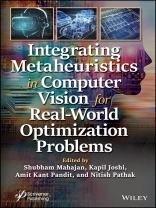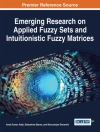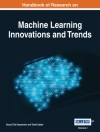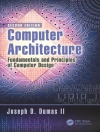A comprehensive book providing high-quality research addressing challenges in theoretical and application aspects of soft computing and machine learning in image processing and computer vision.
Researchers are working to create new algorithms that combine the methods provided by CI approaches to solve the problems of image processing and computer vision such as image size, noise, illumination, and security. The 19 chapters in this book examine computational intelligence (CI) approaches as alternative solutions for automatic computer vision and image processing systems in a wide range of applications, using machine learning and soft computing.
Applications highlighted in the book include:
- diagnostic and therapeutic techniques for ischemic stroke, object detection, tracking face detection and recognition;
- computational-based strategies for drug repositioning and improving performance with feature selection, extraction, and learning;
- methods capable of retrieving photometric and geometric transformed images;
- concepts of trading the cryptocurrency market based on smart price action strategies; comparative evaluation and prediction of exoplanets using machine learning methods; the risk of using failure rate with the help of MTTF and MTBF to calculate reliability; a detailed description of various techniques using edge detection algorithms;
- machine learning in smart houses; the strengths and limitations of swarm intelligence and computation; how to use bidirectional LSTM for heart arrhythmia detection;
- a comprehensive study of content-based image-retrieval techniques for feature extraction;
- machine learning approaches to understanding angiogenesis;
- handwritten image enhancement based on neutroscopic-fuzzy.
Audience
The book has been designed for researchers, engineers, graduate, and post-graduate students wanting to learn more about the theoretical and application aspects of soft computing and machine learning in image processing and computer vision.
लेखक के बारे में
Kapil Joshi, Ph D, is an assistant professor in the Computer Science & Engineering Department, Uttaranchal Institute of Technology in Dehradun, India. His doctorate was on image quality enhancement using fusion techniques. He has 8 years of academic experience and has published patents, research papers, and two books. In 2021, he was awarded the ‘Best Young Researcher’ Award in Global Education and Corporate Leadership received by Life Way Tech India Pvt. Ltd.
Shubham Mahajan, Ph D, is an assistant professor in the School of Engineering at Ajeekya DY Patil University, Pune, Maharashtra, India. He has eight Indian, one Australian, and one German patent to his credit in artificial intelligence and image processing. He has authored/co-authored more than 50 publications including peer-reviewed journals and conferences. His main research interests include image processing, video compression, image segmentation, fuzzy entropy, nature-inspired computing methods with applications in optimization, data mining, machine learning, robotics, and optical communication.
Amit Kant Pandit, Ph D, is an associate professor in the School of Electronics & Communication Engineering Shri Mata Vaishno Devi University, India. He has authored/co-authored more than 60 publications including peer-reviewed journals and conferences. He has two Indian and one Australian patent to his credit in artificial intelligence and image processing. His main research interests are image processing, video compression, image segmentation, fuzzy entropy, and nature-inspired computing methods with applications in optimization.
Nitish Pathak, Ph D, is an associate professor in the Department of Information Technology, Bhagwan Parshuram Institute of Technology, New Delhi, India. He has 17 years of engineering education experience and has published more than 80 journal articles, in peer-reviewed journals as well as book chapters, patents, and conference papers. His research areas include intelligent computing techniques, empirical software engineering, and artificial intelligence.












